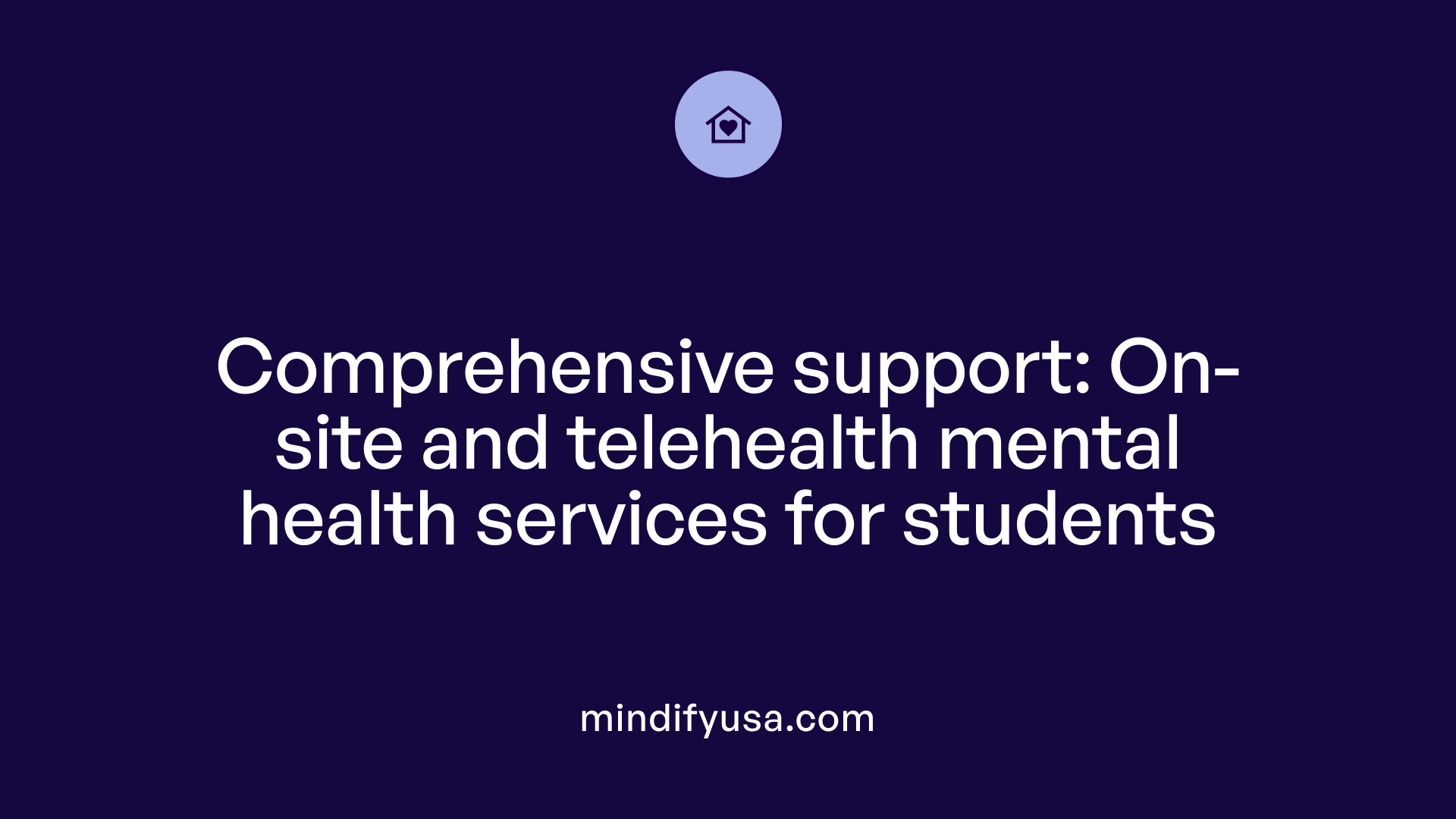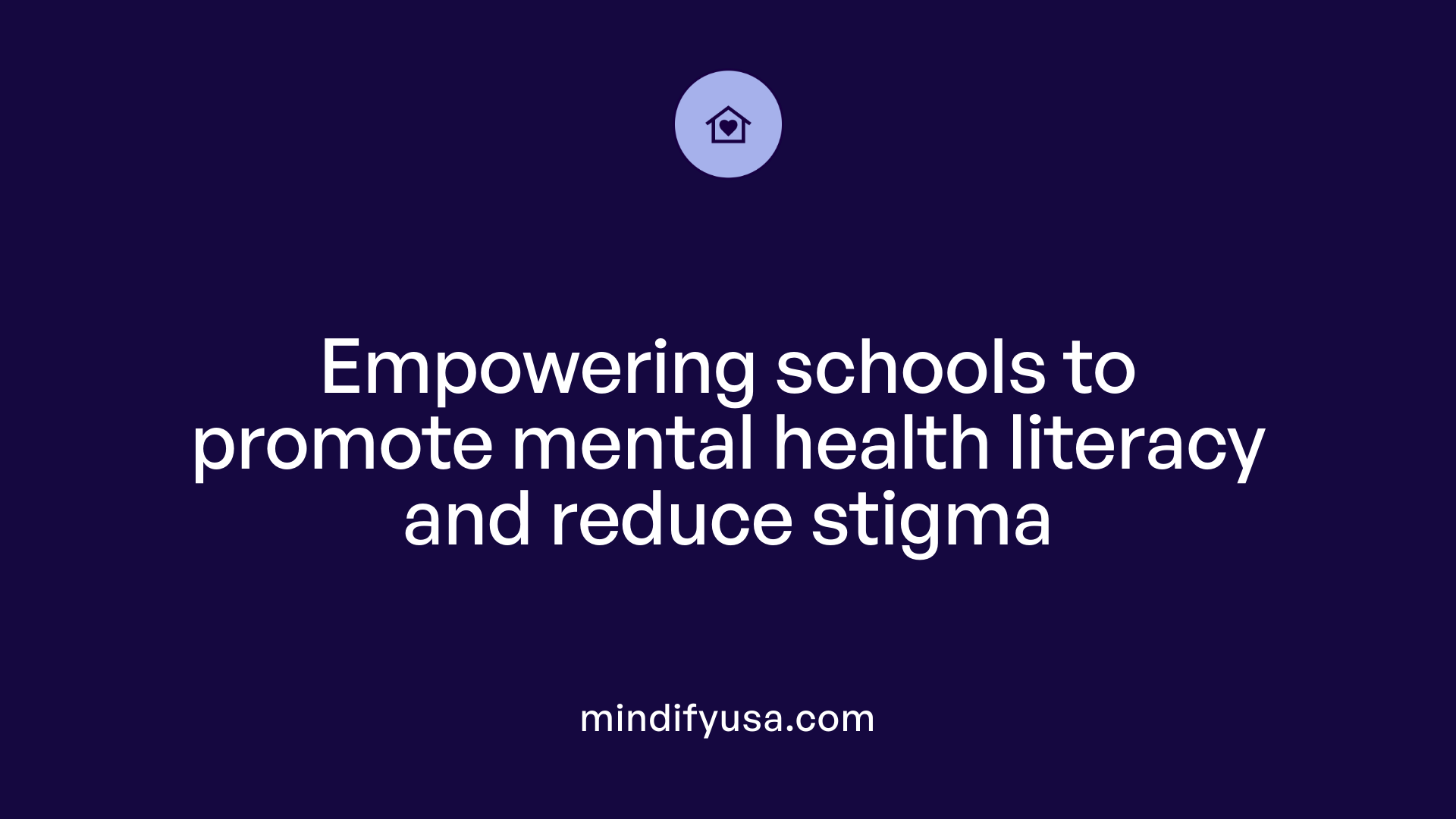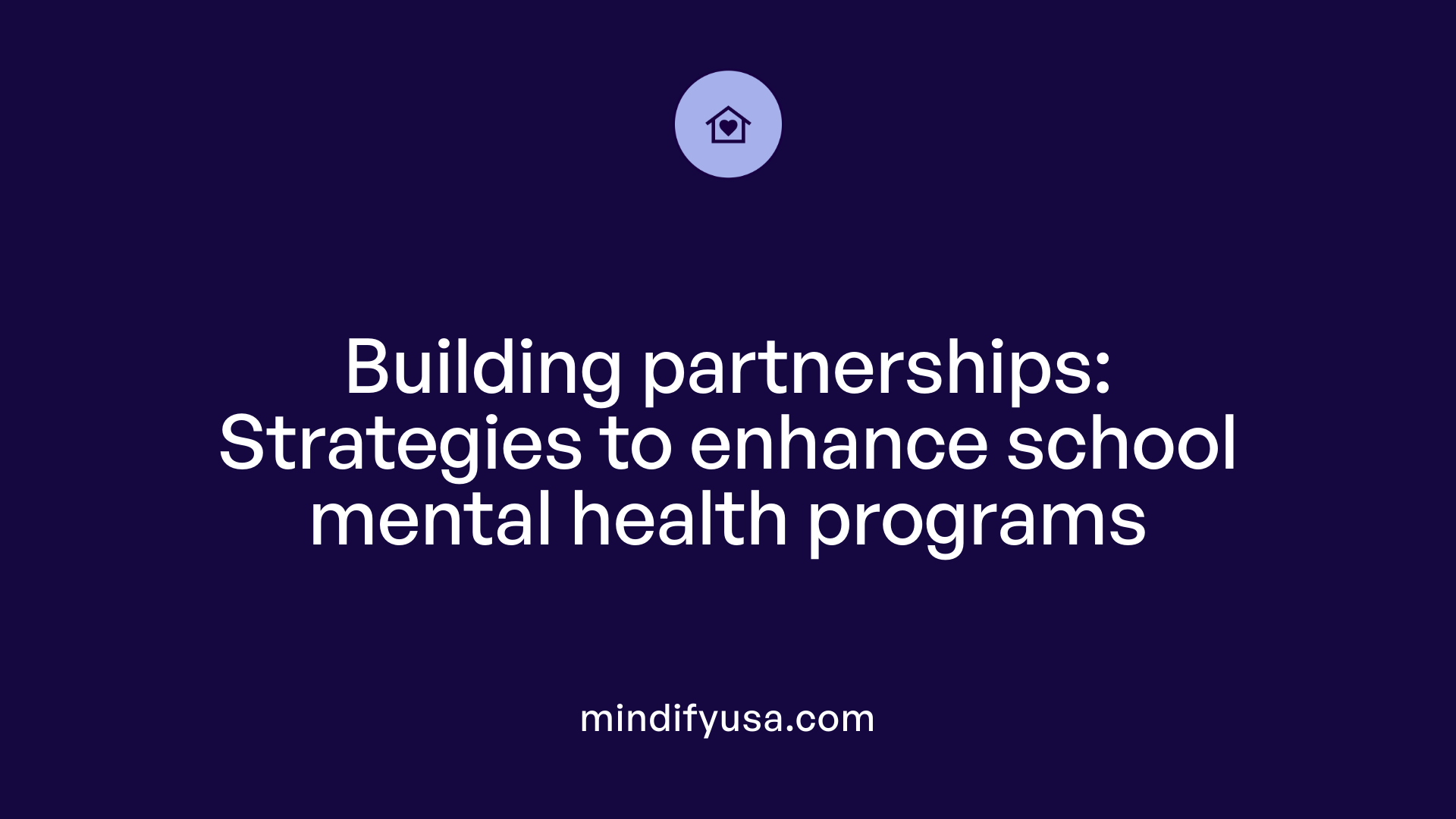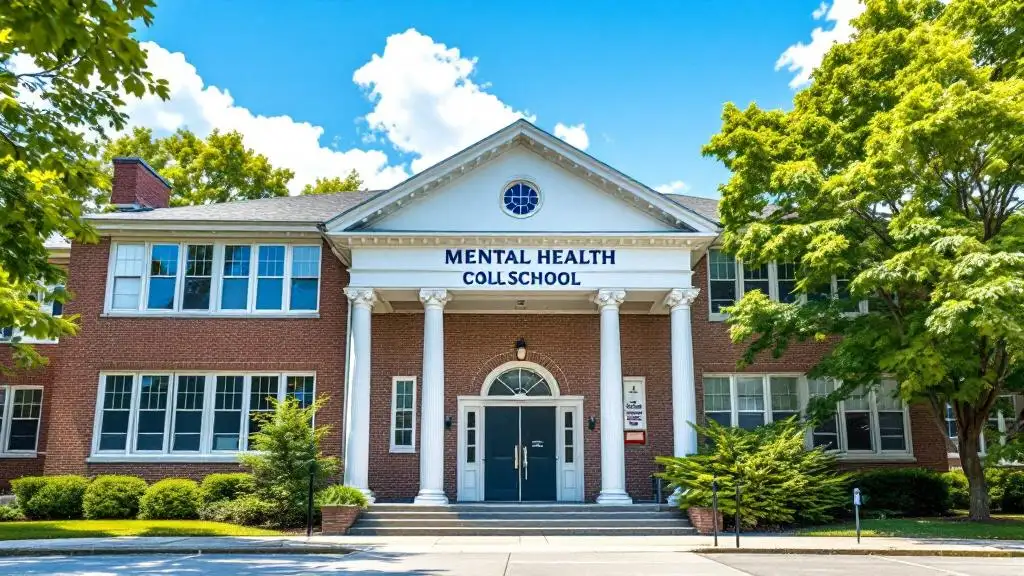Addressing the Growing Need for Mental Health Services in Schools
As mental health challenges such as anxiety and depression rise among children and adolescents, schools are increasingly recognized as critical venues for delivering accessible behavioral health services. With approximately 18% of students utilizing school-based mental health supports during the 2024-2025 school year, it is clear that integrating comprehensive care within educational settings plays a vital role in early identification, intervention, and ongoing treatment. However, schools face numerous challenges—including funding shortages and workforce deficits—that impact service delivery. This article explores how school partnerships can enhance mental health services, focusing on effective models, barriers, and promising strategies to support students' behavioral health.
Comprehensive Mental Health Services Available in Schools for Anxiety and Depression

What comprehensive mental health services are typically available for treating anxiety and depression?
Schools provide a wide range of mental health services aimed at supporting students facing anxiety and depression. These services are evidence-based and include psychotherapy approaches such as cognitive-behavioral therapy (CBT), social skills training, and teacher consultation models. Such therapies have demonstrated effectiveness in addressing emotional and behavioral problems common among students.
What types of mental health services are provided on-site and via telehealth?
Almost all public schools (97%) offer at least one mental health service, including individual counseling, case management, and referral services. In addition to in-person care, there is growing use of telehealth, group-based interventions, and family support programs. Telehealth expands access, especially when schools face shortages of licensed professionals. Integrated social-emotional learning programs complement direct mental health services by promoting overall emotional wellbeing.
What role do licensed mental health professionals and external providers play?
Seventy percent of schools employing mental health services have licensed mental health professionals on staff. These professionals include counselors, psychologists, and social workers who provide direct support, conduct assessments, and guide interventions. Additionally, 57% of schools engage external providers to supplement in-house capacity. Collaboration between school staff and external mental health experts helps address care gaps and ensures comprehensive support for students.
How do community resources and digital tools complement school-based services?
Schools partner with community behavioral health services to link students and families to further behavioral health care. Federal initiatives support such collaborations through grants and resources. Digital tools, including mental health apps, self-help portals, and teleconsultations, augment traditional services by increasing accessibility and supporting early intervention. These resources, combined with school-based strategies, create a robust network to address the complex needs of students with anxiety and depression.
Maintaining an integrated and adaptable approach is essential, given funding challenges, provider shortages, and rising mental health concerns among youth. Comprehensive mental health services in schools are vital for early identification, treatment, and support, fostering healthier students better equipped for academic and social success.
The Role of Schools in Early Identification and Prevention of Mental Health Issues

How do schools contribute to early detection of anxiety and depression?
Schools play a critical role in recognizing early signs of mental health issues such as anxiety and depression among students. Given that 12–30% of children and youth experience mental illness that impacts their education, schools serve as a primary point of contact. Educators and school counselors are often the first to notice changes in behavior, attendance, mood, and school performance that may signal mental health concerns.
What strategies help promote mental health literacy and reduce stigma in schools?
Promoting mental health literacy involves educating students, staff, and families about mental health issues to normalize conversations and reduce stigma. School-based programs include social-emotional learning curricula, awareness campaigns, and restorative practices. Training for staff on supporting student mental health is provided in 61% of schools, equipping adults to better recognize and respond to students’ needs.
How are screenings and referral processes used in schools?
Schools employ mental health screenings and referral systems to identify students at risk and connect them with appropriate services. Tools include evidence-based screening instruments and coordination with behavioral health experts. Collaborative approaches between school staff, families, and mental health providers ensure timely referrals and ongoing support for children facing anxiety and depression.
What are the benefits of early intervention for students?
Early identification and prevention efforts can substantially improve educational and mental health outcomes. Intervening before symptoms escalate helps reduce absenteeism, prevents long-term mental health conditions, and fosters healthier social and emotional development. School-based mental health services utilizing evidence-based interventions such as cognitive-behavioral techniques enhance emotional and behavioral outcomes, ultimately supporting academic success and well-being.
Challenges Faced by Schools in Delivering Mental Health Services

Funding and Workforce Shortages Impacting Service Availability
Many schools struggle to provide effective mental health services due to insufficient funding and a shortage of licensed mental health providers. Approximately one-third of schools expressed doubts about their capability to deliver mental health support adequately, primarily because of these resource constraints. While 70% of schools employing mental health services have licensed professionals on staff, only 57% use external providers, revealing gaps in workforce availability that hinder comprehensive care.
Barriers Including Lack of Diagnostic Capabilities and Uneven Resource Distribution
Beyond workforce shortages, many schools lack the capacity to carry out detailed diagnostic mental health assessments and treatments. About half of schools offered such services in recent years, highlighting significant limitations. Additionally, disparities in resource allocation mean that students of color and those from low-income backgrounds face greater challenges accessing sufficient mental health care, widening equity gaps.
Impact of Recent Federal Policy and Funding Changes
Federal support, such as funding through the Bipartisan Safer Communities Act and increased Medicaid accessibility, has previously bolstered school-based mental health services. However, recent policy adjustments and the end of pandemic relief funds have led to reduced federal grant funding, causing program disruptions and staffing threats. Consequently, many districts rely more heavily on their own resources and partnerships, which may not fully compensate for decreased federal assistance.
Issues of Equity and Disparities Affecting Marginalized Student Groups
Equity concerns are prominent in mental health service delivery. Marginalized groups — including racial and ethnic minorities and LGBTQ+ students — are disproportionately affected by mental health challenges but often encounter barriers to receiving care. High student-to-counselor ratios and limited culturally responsive services compound these difficulties. Addressing these disparities is crucial to ensure all students access timely and effective mental health supports.
Effective Collaboration and Implementation Strategies in School Mental Health Programs

Why is stakeholder engagement crucial in school mental health services?
Engaging key stakeholders such as educators, mental health professionals, and families is essential to successfully deliver school-based mental health services (SBMHS). Collaboration fosters communication and commitment, helping to create a supportive network that meets students' diverse mental health needs. Coordinated efforts between teachers, behavioral health experts, and families enhance early identification and intervention for issues like anxiety and depression.
How are evidence-based and culturally appropriate practices integrated?
Effective school mental health programs adapt evidence-based interventions—such as cognitive-behavioral techniques and social skills training—to local school contexts. Ensuring cultural appropriateness of materials supports engagement across different student populations, increasing program effectiveness and reducing disparities.
What role does Multi-tiered Systems of Support (MTSS) play?
MTSS frameworks integrate mental health strategies across multiple support levels, from universal promotion to targeted interventions. The CDC’s action guide emphasizes aligning mental health services with existing MTSS to create a continuum of care, enhancing both prevention and treatment within the school setting.
How important are staff training and communication?
Staff training, provided in over 60% of schools, builds capacity for mental health support and helps address staff burnout. Regular communication channels among staff, mental health providers, and families maintain consistency in care and encourage the use of assessment tools and intervention strategies outlined in the CDC’s mental health action guide.
Integrating teamwork, evidence-based and culturally responsive practices, structured support systems, and continuous training ensures mental health programs are effectively implemented to improve student well-being and academic success.
Federal and Community Support for Enhancing School-Based Behavioral Health Services
Overview of federal initiatives and funding sources supporting school mental health
Federal agencies including HRSA, CMS, ACF, and SAMHSA have developed evidence-based resources and grants designed to improve access and quality of mental health care for children and youth in schools. Key legislative acts, such as the Bipartisan Safer Communities Act, provide funding aimed at expanding mental health services in educational settings. However, recent policy changes have led to funding reductions and disruptions, challenging the sustainability of these programs.
Use of Medicaid and grant funding for services and workforce development
Medicaid supports over $4 billion annually for school health services, crucially funding mental health programs and staffing. Funding increasingly comes from district resources and partnerships, especially since federal grant funding has decreased post-pandemic relief. Developing a well-trained workforce through grant-supported training programs remains critical to effective mental health service delivery in schools.
Community partnerships and telehealth expansion
Schools have expanded mental health services with partnerships involving external providers, with 57% of schools utilizing outside professionals. Additionally, telehealth services have grown to supplement traditional in-person counseling, making mental health supports more accessible and adaptable to students' needs.
Role of data-driven decision-making to promote equitable outcomes
Data-driven methods are vital to identify mental health needs and gaps, allowing schools to implement evidence-based, culturally appropriate interventions. This approach supports equitable access and outcomes across diverse student populations, addressing systemic disparities in mental health service delivery.
Advancing Mental Health Through Stronger School Partnerships
Schools are pivotal in addressing the rising mental health needs among youth, especially concerning anxiety and depression. By leveraging comprehensive mental health services, fostering early identification and prevention, and overcoming barriers related to funding and workforce shortages, schools can significantly improve student well-being and academic success. Effective collaboration among educators, mental health professionals, families, and community partners, supported by federal resources and evidence-based strategies, is essential to create integrated, culturally responsive behavioral health programs. Prioritizing these partnerships empowers schools to not only respond to immediate mental health challenges but also to lay the foundation for resilient, supportive educational environments that promote lifelong wellness.
References
- The Landscape of School-Based Mental Health Services
- Promoting Mental Health and Well-Being in Schools
- Supporting Child and Student Social, Emotional, ...
- Implementing School-Based Mental Health Services
- Student Mental Health and Education
- Behavioral Health Resources for Youth
- The School Counselor and Student Mental Health
- Bridging the gap in school mental health: Strategies for ...
- Home | SAMHSA - Substance Abuse and Mental Health ...
- VA Mental Health Services | Veterans Affairs





































































































